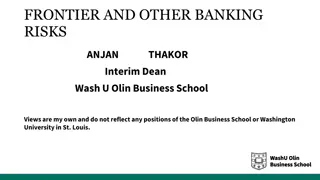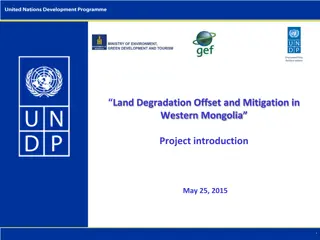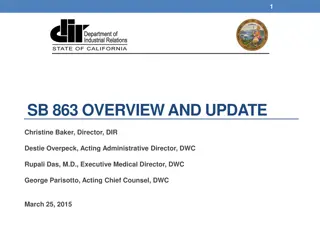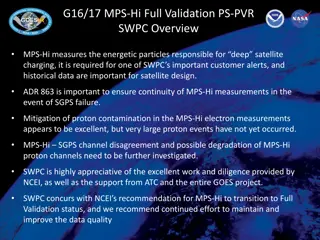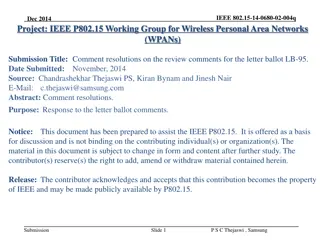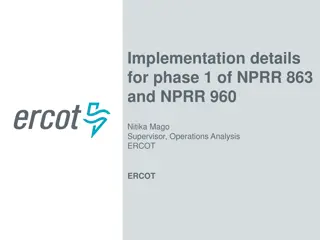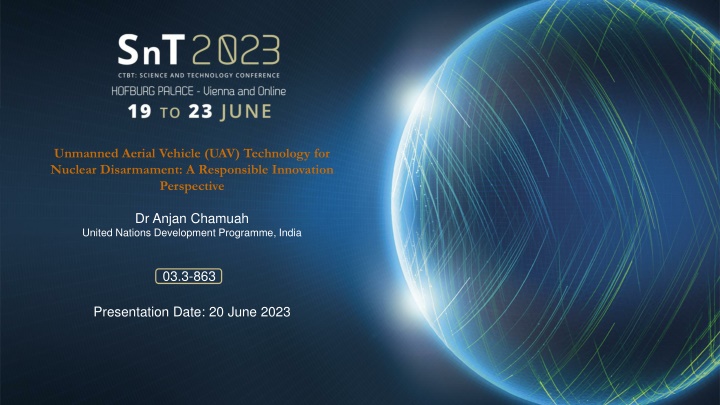
UAV Technology for Nuclear Disarmament: Responsible Innovation Perspective
Explore the potential of Unmanned Aerial Vehicle (UAV) technology in advancing nuclear disarmament objectives. Learn about the role of responsible innovation in addressing illicit nuclear testing issues, with a focus on ethics, sustainability, and society.
Download Presentation

Please find below an Image/Link to download the presentation.
The content on the website is provided AS IS for your information and personal use only. It may not be sold, licensed, or shared on other websites without obtaining consent from the author. If you encounter any issues during the download, it is possible that the publisher has removed the file from their server.
You are allowed to download the files provided on this website for personal or commercial use, subject to the condition that they are used lawfully. All files are the property of their respective owners.
The content on the website is provided AS IS for your information and personal use only. It may not be sold, licensed, or shared on other websites without obtaining consent from the author.
E N D
Presentation Transcript
Unmanned Aerial Vehicle (UAV) Technology for Nuclear Disarmament: A Responsible Innovation Perspective Dr Anjan Chamuah United Nations Development Programme, India 03.3-863 Presentation Date: 20 June 2023
Introduction O3.3-863 Reducing use of nuclear weapons Nuclear Disarmament Nuclear weapon free world
Research Questions How far technology like UAV can fulfill the objectives of CTBT? How can the framework of responsible innovation help in studying the issue of illicit nuclear testing?
UAV: What is it? UAV (also known as a drone) refers to an aircraft, a flying machine without an onboard human pilot. Article 8 of the Convention on International Aviation, defines UAV as an aircraft flown without a human pilot-in-command on- board and is either remotely and fully controlled from another place another aircraft, space) or programmed autonomous (ICAO, 2005). A single board computer A global positioning system Civil A remote control aircraft A multispectral camera (ground, and fully
UAV Rules, regulations and law Risk mitigating tool UAV Intelligence, Surveillance and Reconnaissance (ISR) Governance structure Crop Cutting Experiments Accountability of actors and stakeholders
Responsible Innovation (RI) or Responsible Research and Innovation (RRI) Responsible innovation (RI) means taking care of the future through collective stewardship of science and innovation in the present (Stilgoe et al., 2013) . Whereas, Von Schomberg (2013) defined responsible research and innovation (RRI) which talks about ethics, sustainability, and society. According to Singh and Kroesen (2012): Responsible innovation (RI) means to be caring or ensuring care for certain values for social, economic and environmental sustainability by engaging in anticipation, reflexivity, deliberation, responsiveness and participation for bringing up any change in any idea, product, process, method, way of doing business, technology, etc. in order to bring them into a specific market or use them in a society.
Why Responsible Innovation (RI)? Innovation: Creative Destruction (Schumpeter, 1912) Ideation RI=innovation, ethics, care, sustainability, society, technology, science, governance, values Concept Defining and Detailing Prototyping Sustainable Development: Judicious use of resources at present, considering the future generation Commercialisation
Values and UAV Embedding values in the design of the technology makes a technology responsible (Hoven, J 2013) Accountability Accuracy Efficiency Safety

